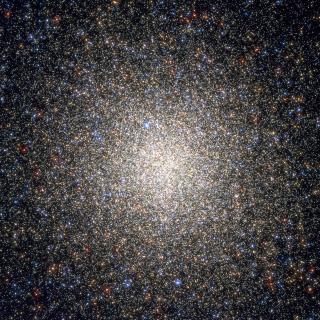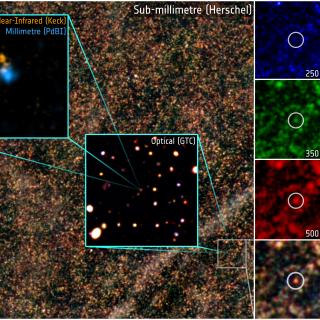Bibcode
Kirichenko, A. Yu; Zharikov, S. V.; Karpova, A. V.; Fonseca, E.; Zyuzin, D. A.; Shibanov, Yu A.; López, E. A.; Gilfanov, M. R.; Cabrera-Lavers, A.; Geier, S.; Dong, F. A.; Good, D. C.; McKee, J. W.; Meyers, B. W.; Stairs, I. H.; McLaughlin, M. A.; Swiggum, J. K.
Referencia bibliográfica
Monthly Notices of the Royal Astronomical Society
Fecha de publicación:
1
2024
Número de citas
7
Número de citas referidas
4
Descripción
PSR J1641+8049 is a 2 ms black widow pulsar with the 2.2 h orbital period detected in the radio and γ-rays. We performed new phase-resolved multiband photometry of PSR J1641+8049 using the OSIRIS instrument at the Gran Telescopio Canarias. The obtained data were analysed together with the new radio-timing observations from the Canadian Hydrogen Intensity Mapping Experiment (CHIME), the X-ray data from the Spectrum-RG/eROSITA all-sky survey, and all available optical photometric observations. An updated timing solution based on CHIME data is presented, which accounts for secular and periodic modulations in pulse dispersion. The system parameters obtained through the light-curve analysis, including the distance to the source 4.6-4.8 kpc and the orbital inclination 56-59 deg, are found to be consistent with previous studies. However, the optical flux of the source at the maximum brightness phase faded by a factor of ~2 as compared to previous observations. Nevertheless, the face of the J1641+8049 companion remains one of the most heated (8000-9500 K) by a pulsar among the known black widow pulsars. We also report a new estimation on the pulsar proper motion of ≈2 mas yr-1, which yields a spin-down luminosity of ≈4.87 × 1034 erg s-1 and a corresponding heating efficiency of the companion by the pulsar of 0.3-0.7. The pulsar was not detected in X-rays implying its X-ray-luminosity was $\lesssim$3 × 1031 erg s-1 at the date of observations.
Proyectos relacionados

Vía Láctea y galaxias cercanas
El objetivo general del Proyecto es el estudio de la estructura, historia evolutiva y proceso de formación de galaxias a través de sus poblaciones estelares resueltas, tanto a partir de fotometría como espectroscopia. El proyecto puede dividirse en cuatro líneas principales: I. Historia de formación estelar en el Grupo Local. El objetivo de esta
Martín
López Corredoira

Formación y Evolución de Galaxias: Observaciones Infrarrojas y en otras Longitudes de Onda
Este grupo desarrolla varios proyectos extragalácticos en diferentes rangos del espectro electromagnético utilizando satélites y telescopios en tierra para estudiar la evolución cosmológica de las galaxias y el origen de la actividad nuclear en galaxias activas. En el aspecto instrumental, el grupo forma parte del consorcio internacional que ha
Ismael
Pérez Fournon